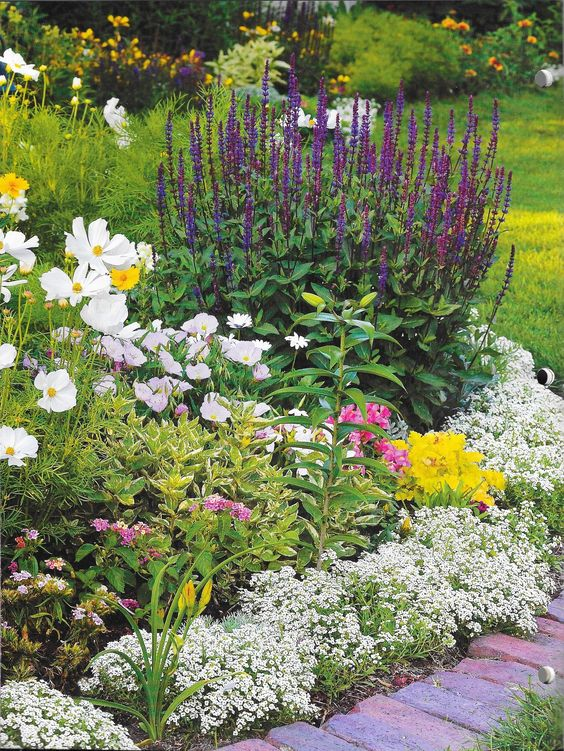How Do You Fence a Flower Bed? Fencing a flower bed is a great way to protect it from animals, define its boundaries, and add aesthetic appeal.
Start by measuring the perimeter of the bed to determine the amount of fencing needed.
Choose a suitable fencing material like wood, metal, or vinyl. Install fence posts at regular intervals around the bed and secure them firmly in the ground.
Attach the fencing material to the posts, ensuring it is taut and secure. Consider adding a gate for easy access. Finally, add mulch or decorative rocks around the bed to complete the look.
With proper fencing, you can safeguard your flower bed and enhance its overall beauty.
Fencing a flower bed can serve multiple purposes, including protecting delicate blooms from animals or creating a defined and aesthetically pleasing border for your garden.
Whether you have a sprawling flower bed or a small patch of blooms, installing a fence can add structure and security and enhance the overall appearance of your garden.
In this guide, we will explore the steps involved in fencing a flower bed, from assessing the need for fencing to selecting the appropriate materials and installing the fence.
We will also discuss ways to enhance the functionality and visual appeal of the fence, as well as the importance of regular maintenance.
Assessing the Flower Bed and Determining the Need for Fencing – How Do You Fence a Flower Bed?

pinterest.com
1. Examining the Existing Plants
Evaluate the types of plants in your flower bed, including their size, growth habits, and vulnerability to external factors.
Consider whether your flowers are susceptible to animal damage, such as rabbits, deer, or pets, or if they require protection from trampling.
2. Reasons for Fencing
Assess the threats your flower bed may face, such as foraging animals, foot traffic, or neighbouring plants encroaching on your blooms.
Determine the main reasons for installing a fence, such as protecting delicate flowers, defining boundaries, or creating a visual barrier.
3. Analyzing the Overall Garden Environment – How Do You Fence a Flower Bed?

pinterest.com
Consider the location and surroundings of your flower bed, including nearby trees, shrubs, or structures that could affect the need for fencing.
Consider factors like wind patterns, sunlight exposure, and soil conditions that may impact the health and growth of your flowers.
Choosing the Appropriate Fencing Materials – How Do You Fence a Flower Bed?
1. Factors to Consider When Selecting Materials

pinterest.com
Choose materials that complement the overall design and style of your garden. Consider options that enhance the beauty of your flowers rather than overpowering them.
Select materials that can withstand outdoor conditions and potential impacts. Ensure they are resistant to rot, decay, rust, or other forms of damage.
2. Popular Fencing Options for Flower Beds

pinterest.com
Metal fences like wrought iron or aluminum can add an elegant and timeless look to your flower bed. They offer durability and versatility in design.
Picket fences create a classic and charming appeal. They are available in different heights and can be painted or stained to match.
Installing the Fence for the Flower Bed – How Do You Fence a Flower Bed?
1. Setting Up the Edging According to the Chosen Materials
Place the fence posts in the dug holes, ensuring they are level and upright. Fill the holes with concrete or compacted soil to secure the place.
If using plastic edging, insert it into the trench and press it firmly into the soil to create a stable border.
2. Securing the Fence Panels or Edging in Place
Attach the fence panels to the posts using appropriate hardware, such as screws or nails, following the manufacturer’s instructions.
Connect the sections securely for plastic edging, ensuring a tight fit and alignment along the entire perimeter.
3. Adjusting the Fence Height and Ensuring Even Placement

pinterest.com
Use a level to check the vertical alignment of the fence panels or the edging. Make necessary adjustments to ensure a straight and even fence.
Trim the fence panels or edging to the desired height using appropriate tools, ensuring they are uniform throughout the flower bed.
4. Finishing Touches and Securing the Fence
Add additional features like gates, trellises, or decorative elements according to your design plan. Double-check all connections, screws, or nails to ensure the fence is securely attached and stable.
Maintaining and Caring for the Fence
1. Regularly Inspecting the Fence for Damage or Wear
Routinely examine the fence for any signs of damage, such as loose boards, rust, or cracks. Check the stability of the posts and connections to ensure they remain secure.
2. Performing Necessary Repairs and Replacements
Address any damage or wear promptly by repairing or replacing the affected parts. Replace broken or rotted pieces, tighten loose screws or nails, and repaint or restain as needed.
3. Trimming Plants and Adjusting Their Growth Within the Fenced Area
Regularly trim any overgrown plants or vines that may encroach on the fence or obstruct its visual appeal.
Prune plants to maintain their size and shape, ensuring they do not interfere with the functionality or aesthetics of the fence.
4. Cleaning the Fence
Remove any dirt, debris, or plant material that accumulates on the fence. Use a gentle cleaning solution and a soft brush or cloth to clean the surface, especially if the fence is made of metal or painted wood.
Conclusion
How Do You Fence a Flower Bed? Fencing a flower bed provides practical benefits and aesthetic appeal to your garden.
By assessing the flower bed’s needs, selecting appropriate materials, and properly installing the fence, you create a protected and defined space for your beloved blooms.
Enhancing the fence’s functionality and aesthetics by adding gates, decorative elements, and proper maintenance further elevates the overall beauty of your flower bed.
